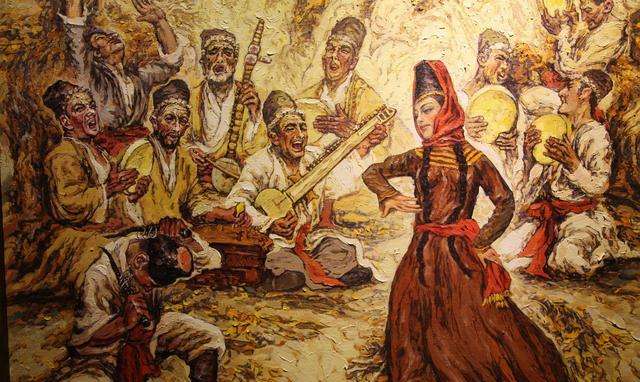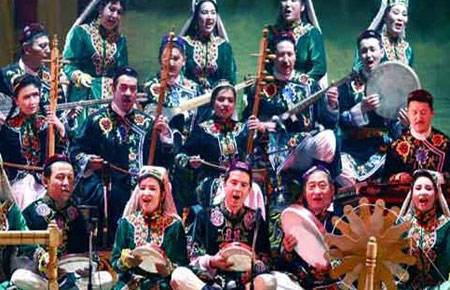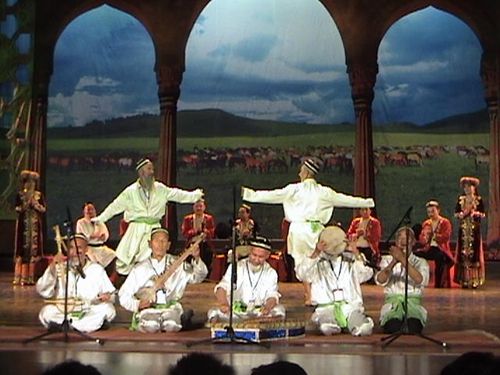Preservation of Ethnic Cultures
4 min readThe people of various ethnic groups in Xinjiang have created rich and vibrant cultures which have made unique contributions to the development of Chinese culture. Originating out of a pivotal region along the ancient Silk Road, Xinjiang culture has acquired strong regional and ethnic characteristics, featuring profound heritage, varied forms as well as rich and diverse folk arts. For many years, China has been continually devoted to collecting, sorting out, translating and publishing the cultural heritage of the various ethnic minority groups, protecting their places of historic interest and scenic beauty and other valuable cultural and historical heritages. A preservation system combining government guidance, academic support and public participation has been established, which has ensured the inheritance and development of the fine cultural heritage of all ethnic groups.

Minority folk music and dances are a major cultural component in the culture of Xinjiang. Since the founding of PRC in 1949, art troupes at various levels, art schools and institutes have been established in Xinjiang; they have rescued, collected, compiled and preserved large numbers of folk music and dance works, and trained one generation after another of art workers to pass on and develop further traditional folk music and dances. In the 1990s, some books or book series related to art, including Collection of Chinese Ethnic and Folk Musical Instruments Compositions (Xinjiang Volume), Collection of Chinese Drama Music(Xinjiang Volume), Collection of Chinese Folk Songs(Xinjiang Volume) and Collection of Chinese Ethnic and Folk Dances (Xinjiang Volume), were published, thus effectively guaranteeing the preservation of all categories of fine traditional music and dance of the various ethnic groups in the form of music, music scores and images, as well as text and audiovisual form.

Twelve Muqams, known as “Mother of Uyghur Music, “is a group of classical music pieces combining Uyghur singing, dancing and music, considered a treasure of Chinese ethnic music. Before the founding of PRC in 1949, Twelve Mugams had almost become lost. In August 1951, Twelve Muqams was listed at the top of arts that called for rescue by the people’s government of the then Xinjiang Province, which mobilized efforts for systematic research, collection and compilation. In 1955, music recording along with notation and lyric collation of Twelve Muqams was completed; and the music score of Twelve Muqams was published in 1960, marking the turning point from a purely oral legacy to textual heritage. After the 1980s, the government of the autonomous region established a Muqam research institution and a Muqam art troupe, both of which specialize in collecting sorting out, researching and performing Uyghur classical music, folk songs and dances, especially the muqams, thus further promoting the rescue, preservation and development of the mugam arts. In 2003, Xinjiang Uyghur muqam arts were included in the first group of pilot projects in the “Chinese Ethnic and Folk Cultural Preservation Program. In 2005, Xinjiang Uyghur Muqam Arts of China was approved by UNESCO as “Masterpiece of the Oral and Intangible Heritage of Humanity.”
The Sixty-two Kongeri (62 melodious divertimento) is a comprehensive art form mainly composed of kui (instrumental music composition) while combining folk songs, dances and ballad-singing, representing the finest of Kazak folk culture. Since the 1990s, the government has set up special organizations for the collection, compilation and publication of Akku Kongeri (White Swan Divertimento).
Xinjiang boasts a wealth of folk literary resources of all ethnic minorities. With state support over the years, the government of the autonomous region has formulated plans and organized efforts to systematically rescue and preserve the folk literary works of the various ethnic minorities resulting in the collection, compilation, translation and publication of a large number of folk literary heritages of the Uyghur, Kazak, Mongolian, Kirgiz, Tajik, Xibe, Uzbek and other peoples, including folk song lyrics, myths and legends, humorous anecdotes and stories, fables and proverbs. Great achievements have been made in collecting, editing, translating, publishing ang researching of folk epics, including Manas, Janger and Life of King Gesar. A Comprehensive Turkic Dictionary and other exceptional minority historical and cultural heritages have been effectively preserved. The Uyghur literary classics Rabiya and Se’idi and Ferhad and Sherin, and the Kazak long poem Seliha and Semen were edited and translated into Chinese and published. The compilation of Collection of Chinese Folk Literature (Xinjiang Volume) has also been completed.

Ancient books of Xinjiang minorities, in multiple languages with extensivedistribution, represent a major component of China’s traditional cultural heritage. In the early 1980s, a planning and leading team, along with an office in charge of the collection, editing and publication of ancient books of ethnic minorities, was established in Xinjiang. Similar organizations were successively established in four autonomous prefectures, eight other prefectures, one prefecture-level city and several counties. Since then, the work to rescue, collect, edit and publish such ancient books have been in full swing throughout the whole autonomous region. By 2008, the Xinjiang Minorities Ancient Books Editing Office collected and registered 20,518 volumes(or pieces), with over 100 titles published, including facsimiles of three handwritten copies of the Uyghur classic Kutadgu Bilig, the Kazak medical opus Annals of Medicine, and the Xibe Shamanist classic Shaman Divine Songs, among others.
To promote the rescue, compilation, research and preservation of intangible cultural heritage in the autonomous region, the Xinjiang Intangible Cultural Heritage Preservation Research Center was established It formulated and promulgated regulations on how to administer intangible cultural heritage preservation projects and provisional rules on applying for and appraisal of masterpieces of the intangible cultural heritages. In 2006 and 2008, 63 intangible cultural heritage projects in Xinjiang, including the Kirgiz epic Manas, Mongolian epic Janger and Kazak Aytes, were listed in the first and second groups of national intangible cultural heritage.








